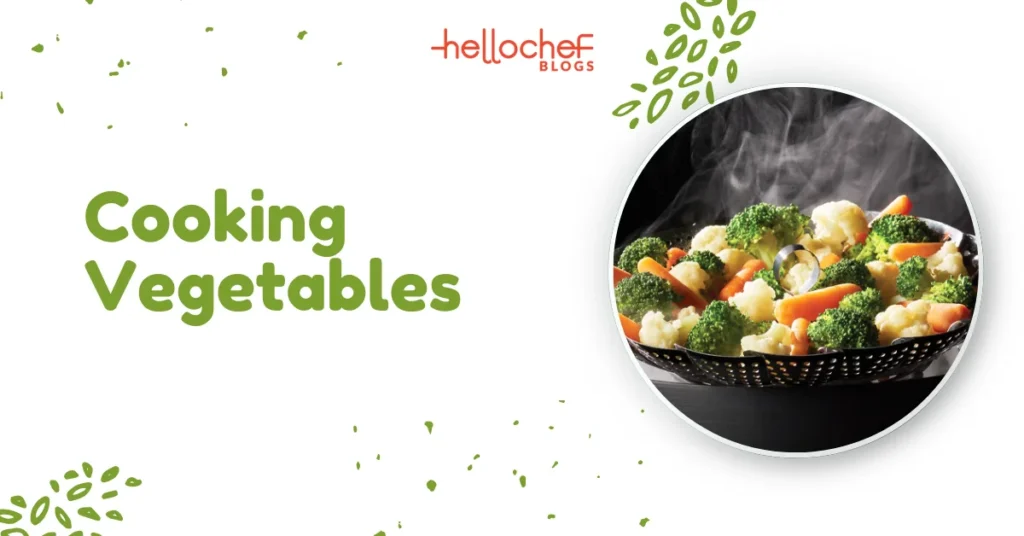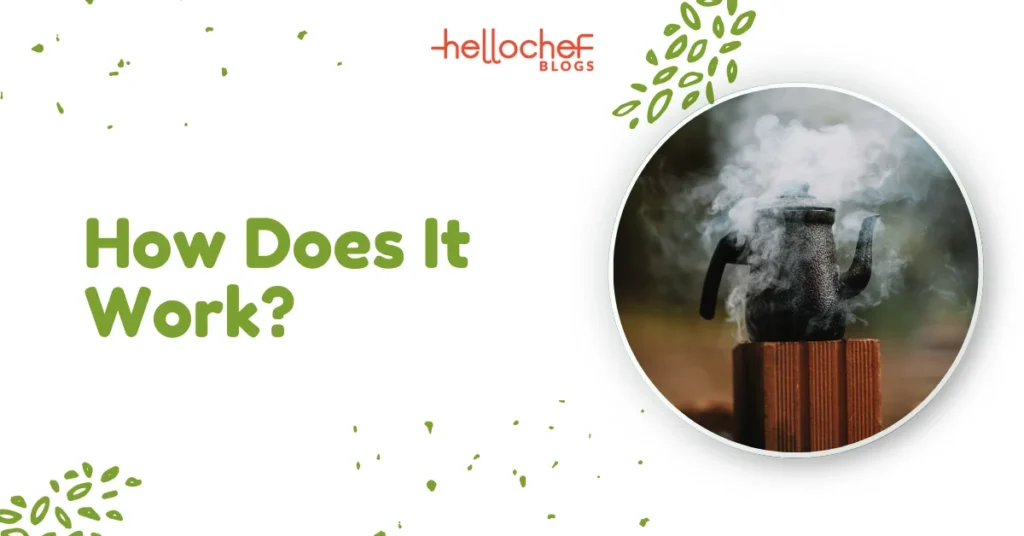The Science of Steaming: Everything You Need to Know About Cooking Vegetables and Foods Like Seafood
Of all the ways to cook your food, steaming is one of the best if you want to retain nutrients and flavors as this is a very gentle way of cooking. Steaming vegetables, seafood, or other types of food will allow you to further enjoy your meals that are healthier and tastier. For all of you this article is dedicated, in which we will take an in-depth look at the science behind steaming, and cover Elemental tips & tricks for mastering steam-cooking. If you are interested in preserving the nutrient density of your meals and putting less reliance on oils, or cooking at high heat which can wreak havoc with vitamins and minerals, its a great read.
What Is Steaming and How Does It Work?
Steaming is a moist-heat cooking method that involves using water vapor to conduct heat onto the food from indirectly. Boiling and Steaming Boiling requires the food to be submerged in water, while steaming keeps the food suspended above boiling water, where hot steam surrounds and cooks it without direct contact. It is an amazing way to cook so many foods like vegetables and fish and doesn’t let the color, texture, and essential nutrients get lost.

In contrast with frying, steaming does not make use of oils or fats and hence it may be regarded as one of the healthiest methods for cooking food. Steam Steam is passing through the air as a means to transfer heat to the food with which it comes in proximity. The result? Cooking by means of steam makes you Newtender and tasty meals, if compared to boiling or frying provides the body with more vitamins and nutrients.
Vegetables look and taste much better when steamed, as they cook fast and keep their colors, flavors, and nutrients. Some vegetables are just water-logged and tasteless after boiling, but hold up much better cut or whole to steady steam.
How Does Steaming Work: The Science Behind It
Water, when heated to 212 degrees Fahrenheit (100 degrees Celsius), boils and reaches vaporization. The steam in turn envelops the food and roasts it with diffuse heat. Steam is hot enough to fully cook the food, yet gentle on fish and vegetables which is best for delicate foods that would break apart or dry out when cooking under high temperatures. At the heart of steaming science is the concept of wet heat which fills the air around food, ensuring that no harsh dry heat reaches any part of a dish directly.

The biggest benefit of steaming is that it can be done without food touching water or fat. In this way, it keeps all of the nutrients such as vitamins and minerals from leaching out into boiling water. Broccoli, asparagus and carrots are great foods to steam because they remain crisp-tender and keep their bright color. Whether or not you’re watching your calories, steaming seafood (shrimp is a classic example) gives it a moisture loss-proof cooking method that keeps things tender.
Temperature 1 control is the most vital part of steaming it needs to be hot enough to cook but not so hot that you oversteam what your cooking. Steaming was developed as a science to keep food in an atmosphere where it can cook more gently without sacrificing its structure and nutrient profile.
What Can You Steam? Vegetables, Seafood, and Beyond
You are not limited to just steaming veggies. Steam can cook so much more than just seafood and dumplings, like steamed tamales or cakes. Steam cooking is usually performed on vegetables though. They cook quickly by steaming, the fillings maintain their nutrients and they keep their bright color. Steaming broccoli, carrots and asparagus is the perfect blend because they are more tenderized yet they keep their flavor and structure in-tact.
You can use shrimp, mussels etc if you want to make steam food using seafood. Not using oils or fats, besides boiling or frying to steam the seafood is incredibly light and delicate. Shrimp, scallops and fish are all ideal for the steamer basket as they only need to be gently cooked. In this way the fish is kept moist and does not dry out.
Steam cooking is wonderful because you can steam multiple items at once. For example, vegetables and seafood can be steamed together. You can only combine compatible foods, though: make sure each food has the same steaming time.
Types of Steamers and Which One is BEST for You
Type of classical steamers in which you can invest It is available in several forms but the main are Bamboo steamers, Metal steamers, and Electric steamers. Bamboo Steamers: A Bamboo Steamer is a traditional type of steamer used to cook certain foods adding an aromatic nature to the food. For dumplings and steamed buns, bamboo steamers work well since they have stacked layers that make it easy to steam several foods in one go.

Metal -Steamers- While, not as versatile and durable as stainless steel or collapsible steamer baskets. They nest great in a pot of water for steaming veggies or fish! They are easy to clean and usually come in adjustable sizes that can fit different pot sizes.
The electric steamers can be practical, offering controllable heat ranges and electronic timers aiding to attain regular effects. This is brilliant if you are of the set and forget variety of home chef. They contain multiple trays which would be perfect for preparing quantities of vegetables, fish among many other items.
There are benefits to both types of steamers — which one is right for you will depend on how and what you prefer to cook.
Sinking steam: outside-the-box options for steaming
Don’t have a steamer? No problem. However, you can steam food using basic kitchen equipment such as stovetop, microwave or a colander/sieve as an improvised steamer.
On the stovetop, you only need a pot of boiling water and something to place the food in/on so it isnt directly in/above the boiling mixture. All you have to do is place the pot lid over it, put a little bit of water in the pot, stick your veggies inside and close the lid to trap all that steam.

If you want to steam vegetables quickly, remember also the microwave. However, microwaving the vegetables in a bowl with a little water under secured cling wrap for a few minutes is established to be one of the most effective ways of food preparation them without losing dietetic top qualities.
Or if you do not have a steamer basket, simply use a large colander that sits on top of your pot! In this case, the food is placed on the mid-top (food) grate, thus allowing the steam to circulate and cook it.

Delishtor Steaming Cheesecakes Recipes
Get started with some easy recipes when you first begin to steam. There are simple choices you can try:
Steamed Broccoli: Steam broccoli florets in a steamer basket over top of a pot of boiling water. Steam 6-8 minutes or until crisp tender. Season with salt, pepper, and a splash of olive oil for extra taste.
Steam: Layer shrimp in a steamer basket. Boil a pot of water and lay your shrimp on the steamer, then steam the shrimp for about 3-4 minutes until it turns pink and opaque. Serve with lemon wedges for garnish.
Steamed Dumplings: Place a bamboo steamer over boiling water and steam dumplings. Cover the dumplings and steam for 8-10 minutes or until the points are thoroughly done.
Steaming is an easy, nutritious and adaptable way of preparing a recipe. The perfect way to steam vegetables, seafood or other popular ingredients such as rice.
Key Takeaways
- Steaming is a healthy cooking method that preserves nutrients and doesn’t require added fats or oils.
- The science of steaming involves cooking food with moist heat from steam, rather than boiling or frying, ensuring that the food retains its vitamins and minerals.
- Vegetables and seafood are perfect candidates for steaming, as they cook quickly and retain their natural flavors.
- Different types of steamers include bamboo steamers, metal steamers, and electric steamers, each offering its benefits for different kinds of food.
- Steaming without a steamer is possible using household items like a stovetop, microwave, or colander.
- Experiment with different recipes, from simple steamed vegetables to more complex dishes like steamed dumplings or shrimp.
Steaming food is a cooking method that’s simple, efficient, and great for maintaining the nutritional value of your meals. Whether you’re cooking vegetables, or seafood, or experimenting with new recipes, steaming is a reliable way to create healthy and flavorful dishes.


